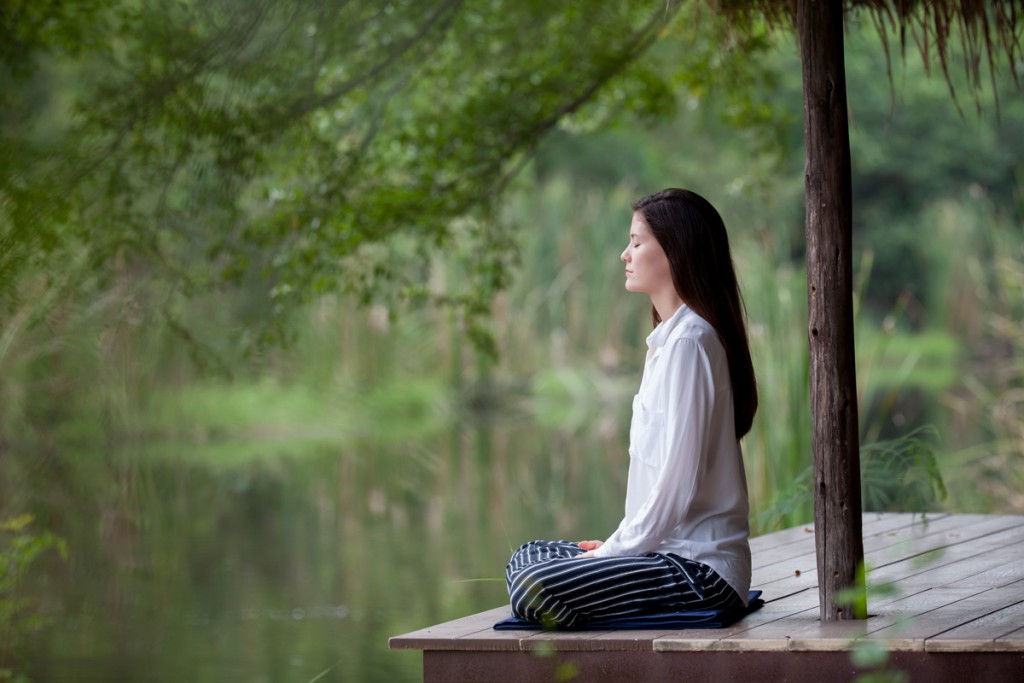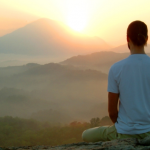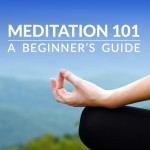
When I started meditating, I thought that meditating was a magic activity. If I could do it right, I thought it would connect me with the Great Mystery, reveal my true nature, develop wisdom, and give me inner peace.
All I had to do was was follow its inscrutable rules and mysterious instructions.
I would sit with my legs crossed (in lotus if I could stand it). Spine erect but supple. My hands in special positions. I would release tension over and over, trying to reach an unattainable zero-point tension level. I thought each instruction held an invisible key that I hoped would get me closer to the Divine.
But with all my attention to my body, did it actually help my meditation? Not if the point of meditating is to learn about your mind instead of looking like the cover of a meditation magazine.
Sitting for meditation doesn’t need to be complex or physically taxing. Your posture should support your practice, not distract from it. For beginners, it’s often best to start simple.
Is There a “Right” Way to Sit for Meditation?
While there are many different instructions about sitting, there are two common themes that show up again and again in many different traditions.
The first is that you should have a firm, balanced base. Whether you are seated in a chair or on a cushion, you should feel grounded and stable. Your weight should feel balanced.
And the second common instruction is to have an erect spine. Slouching is discouraged. It feels uncomfortable and makes your attention a lazy. Some techniques are quite strict about this. For others, it’s more of a guideline.
But other than being grounded and having an erect spine, the rest can vary wildly. Hands facing up or down. Eyes open or closed. Legs in lotus or not. Gaze downwards or forward. Some instructions are quite strict while others are more forgiving. There are many different spins on the right way to meditate.
So why is it important?
The biggest reason to use a special meditation posture is to help build your meditation practice. The posture is designed to minimize distractions. By organizing your body, it helps calm and organize your mind.
In addition, using the same position day after day helps your mind to automatically know how to settle down. It’s a little Pavlovian. Sitting in the same position every time you meditate is a direct signal to your mind that “now it’s time to meditate”.
And the last reason many traditions suggest using particular positions is that it helps balance your energetic body. Some traditions are quite exact on this point. For example, they’ll instruct that certain hand positions create different effects in the body. While opinions vary about these effects, many people believe that your body is more prepared for meditation in a balanced, grounded position.
Ultimately, meditation can happen any where and in any position. But as a good, common sense guideline, a formal mediation posture makes it easier to meditate.
How to Sit in a Simple Meditation Posture
- Find a comfortable position on a cushion or in a chair. If you are on a cushion, have enough height below your hips so you can sit comfortably without needing to hold yourself upright. If you are on a chair, have your feet flat on the floor in a balanced, even way.
- Allow your spine to be soft and erect.
- Place your hands in your lap, either palms down on your legs or open to the sky.
- Let yes head point forward and slightly down so you’re not jutting your chin.
- Close your eyes or leave your eyes open, gaze soft.
That’s it. No hocus pocus. Nothing mysterious. Take a position that is both balanced and comfortable–bonus points if you use the same position every time you meditate.
Common Questions about Sitting for Meditation
Do I have to sit in lotus?
No! Any comfortable position for your legs is fine. If you are on the floor, you can sit cross-legged or with your knees bent so your feet are beside your hips. Placing a height beneath your hips (a pillow, cushion or yoga block) can help if your back is sore or hips tight. If you are in a chair, place your feet evenly on the floor.
Do I have to buy a special meditation cushion or bench?
No. Some meditation traditions use special meditation cushions or benches. If you like them and they make you feel more comfortable, they can be a good tool for your practice. But if you want to sit on a regular pillow, yoga block, or chair, that is fine too.
What if my back hurts?
Sometimes it’s easiest to start with a support for your back. You can sit in a chair or against the wall so you’re not struggling to stay upright.
There’s nothing complex about sitting for meditation. Find a balanced position and begin.



What is meditation ?
I am a trans eiscopalian priest having been ordained nearly 50 years
I trained as a ‘religious ‘ and ‘meditation ‘ happened after daily Mass for 20 minutes . No insrustion was ever given.
There has always been a ‘foggy foggy dew!’
Now at 72 I am intent on uncovering ‘my truth ‘ BUT I DONT WANT TO PLAY WORD GAMES OR MIND GAMES .
Hi Lydia,
Since you have been practicing meditation after mass, I’m curious what meditation is for you. How have you described it to your congregation?
I don’t want to play word games but defining “meditation” is difficult. There is a broad range of practices that are all called meditation. At its core, meditation is resting or calming the mind. There are many practices that are used to develop this skill. And to complicate the definition even more, there are many motivations–from reducing stress to performing various religious or spiritual practices.
I recommend that you scroll the many excellent articles on this website. As you read, you’ll get a sense of what meditation is for different people.
Thank you for the excellent question.
Nice article….If you could add more about how to concentrate.
Hi Joyeta,
I’m about to give you a very frustrating answer– the best way to learn to concentrate is by not worrying about concentrating. This is unsatisfying, I know. But trying to force yourself to concentrate rarely results in concentration.
Instead, I recommend that you take a soft, relaxed approach to your mind. First, pick an object of focus. If you don’t have a regular meditation, I recommend that you start with your breath. For my explanation, I’ll use it as an example.
Bring your focus to your breath. Notice the in and out. Eventually, your mind will probably wander. When it does, gently bring it back to your breath. No big deal. No calamity. Just focus again on the breath without judgement. Be soft, as if your mind were a young child and you are patiently teaching it a new skill.
Follow this pattern over and over. Focus on your breath. When you mind wanders, gently bring it back to your breath. Eventually, with practice, your mind will be able to sustain its focus for a little longer.
This gentle and repeated return to your focus is the best way I know to develop concentration.
Thank you for your piece, I also have been sharing my meditation journey and it is nice to read other’s perspectives. I have found that my meditation practice is like any other relationship in my life – it’s an evolving entity.
Very true, Erin. Thank you.
Thanks for providing the truth about this. Meditation does not require any specific ritual or actions, it is that moment when you remain as awareness. It is easier to focus while sitting, however I recommend people to study walking meditation as well.
-Cody from Pathoftruth.net